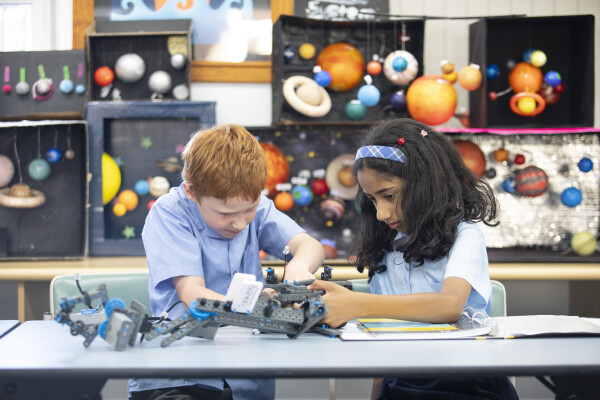
St Paul's
Albion Park
Albion Park
A Catholic Parish Primary School
 The presence and use of Information, Communication and Learning Technologies (ICLT) are an integrated feature of the modern classroom at St Paul's.
The presence and use of Information, Communication and Learning Technologies (ICLT) are an integrated feature of the modern classroom at St Paul's.
iPads are used by students to access the internet and appropriate applications.
All learning spaces have a large flat-screen TV installed, which allows easy integration across all Key Learning Areas as well as the interaction between devices.
At St Paul’s, we give our students the opportunities to reach their full potential by using a range of learning tools and pedagogies including the explicit teaching of foundational skills, immersion in rich literature, communicating ideas in a variety of modes, real-life problem solving, making connections, demonstrating their learning creatively and accessing a range of modern technologies.
View our Student Responsible Use of Technology Agreement, which each student and parent/carer is asked to sign at the commencement of each year.
St Paul’s has implemented a 1:1 iPad program in Years 5 and Year 6. Today’s generation of students view technology as a part of their everyday environment. Students' ability to find, evaluate and create information is enhanced through connecting with the world beyond the classroom. Through technology, mobile learning is possible. To appropriately meet their needs, technology should be pervasive – always available.
At St Paul’s, students in Kindergarten to Year 4 also have access to school-supplied iPads in their classroom.
Read more about our 1:1 iPad program, including setup tips and parent information
At St Paul’s the students are supported with exciting and effective approaches to learning and teaching integrated Science and Technology, Engineering and Mathematics known as STEM.
The students from Kindergarten to Year 6 are given many STEM opportunities to work with an extensive range of robotics on offer such as Sphero SPRK+, mBots, VEX IQ, Ozobots, Makey Makey, Micro:bit and Blue Bots.
The robotics experiences are an excellent tool for building and sustaining STEM interests because students are constantly challenged to solve real-world problems that require critical thinking, collaboration, and innovation using tools that are relevant to them.
The students are introduced to coding apps to help support programming, complete hands-on activities, and share creations within the school community. They learn how to navigate a maze, have a dance party, stack towers, navigate Bluetooth, change lighting, sensors and colours on the robots and compete in robotic sumo wrestling competitions.
Our students also are involved in many diocesan competitions such as VEX IQ scrimmages and mBot challenges offered by the CEDoW.
Aristotle, the famous philosopher, said that “for the things we have to learn before we can do them, we learn by doing them” – and this applies in areas of study that require activities such as STEM (Science, Technology, Engineering and Mathematics).
Did You Know: St Paul’s consistently competes in diocesan competitions and has won many mBot and VEX IQ challenges!
Digital Technologies fall within the Science syllabus. St Paul’s offers a variety of resources to support the integration of digital technologies in the classroom. These include coding, robotics and engineering investigation tasks.
Digital citizenship is a priority at St Paul's, with all students participating in learning experiences that focus on being responsible and ethical users of technology.
Teachers use a range of resources developed by the Catholic Education Diocese of Wollongong, the Office of the eSafety Commissioner and other online safety organisations, to assist in the ongoing education of our students in being safe and responsible digital citizens.
The CEDoW Digital Citizenship Program Site also provides a program of resources for our students on digital citizenship.
Oliver is our school’s Library Management System. It is fully web-based, so the whole school community can access library resources including eBooks and Audiobooks. Simple, clear search options like dynamic picture searches help young students find books and other resources that appeal to them. They can also choose from a huge selection of background graphics and avatars to personalise their library experience.
Oliver means students and staff can also manage their loans and reservations — anywhere, anytime.